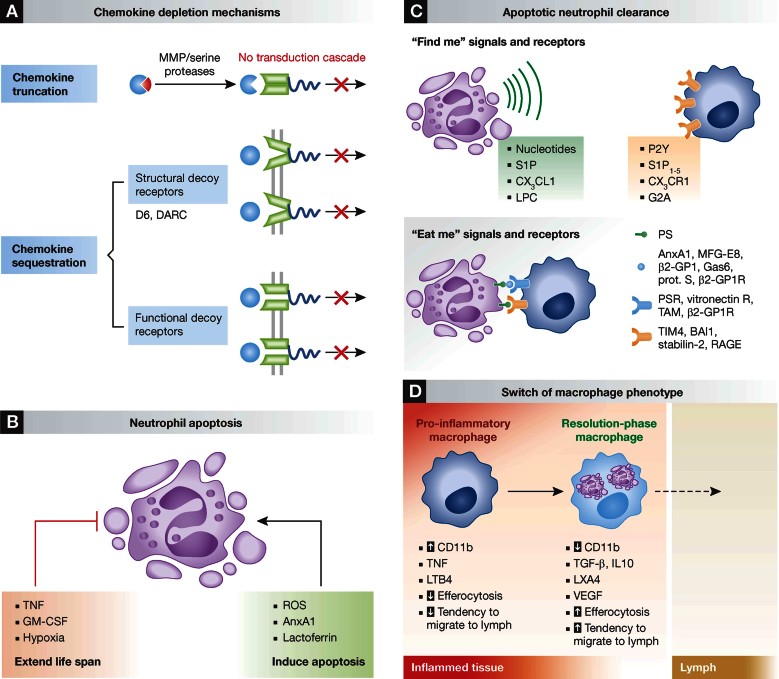Figure 2.
Mechanisms of neutrophil- and macrophage-driven resolution. A. Depletion of chemokines during resolution. MMPs cleave CC and CXC chemokines rendering them non-functional. Structural decoy receptors such as D6 and DARC sequester chemokines without subsequent signal transduction. Functional decoy receptors are classical chemokine receptors with repressed signalling. B. Factors controlling neutrophil life span at sites of inflammation. Interestingly, the pro-apoptotic stimuli can often override those that augment neutrophil life span. C. Upon apoptosis find me signals such as nucleotides, S1P, CX3CL1 and LPC are released that attract scavengers. These recognize apoptotic cells via eat me signals exposed on the cell surface. Clearance is mediated by direct cell–cell contact or by involvement of bridging molecules. D. In response to local mediators and upon efferocytosis, pro-inflammatory macrophages switch to resolution-phase macrophages.

